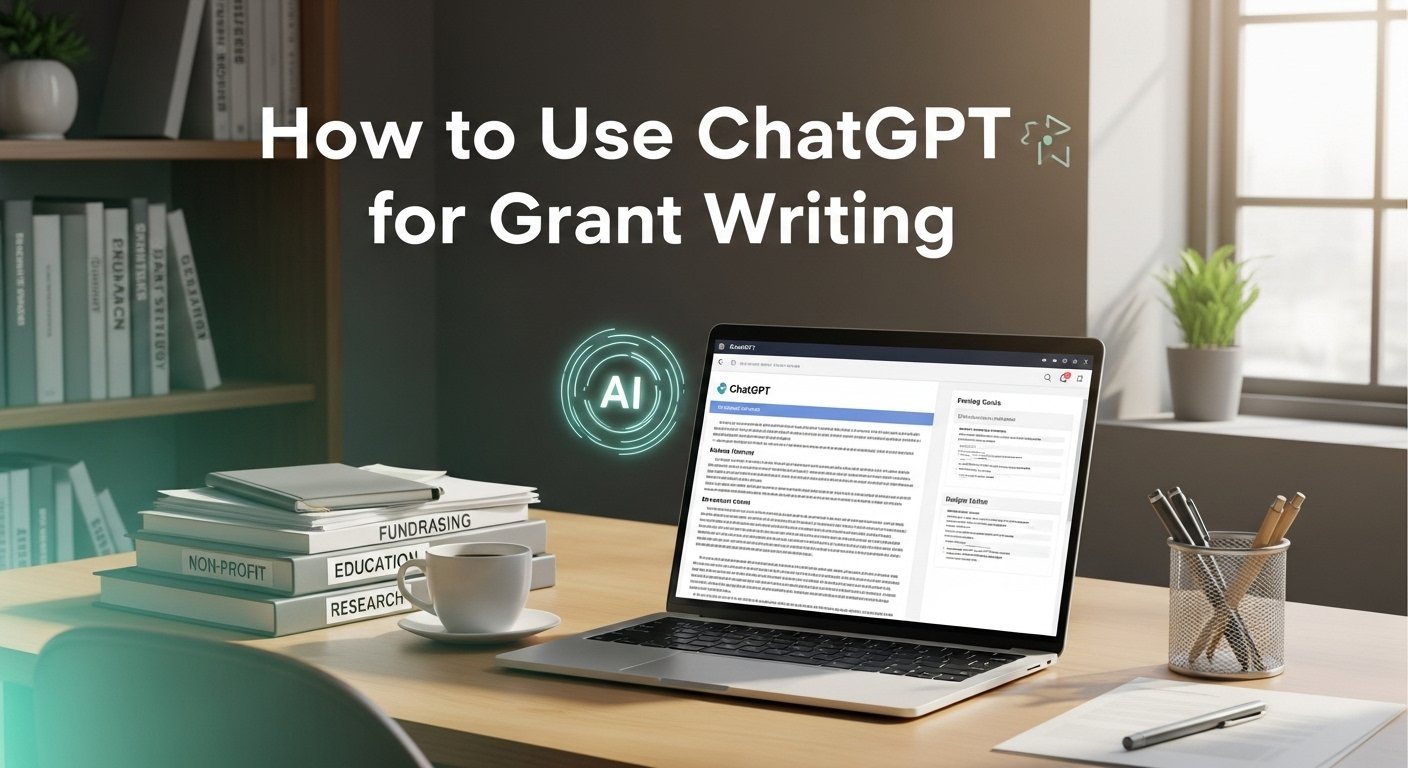Grant writing is a key skill for securing funding for projects, research, or nonprofit work. It can be challenging and time-intensive. Artificial intelligence (AI) tools like ChatGPT can make the process easier by helping with drafting, editing, and organizing.
Benefits of Using ChatGPT for Grant Writing
ChatGPT offers several advantages for grant writers:
- Saves Time: It can create drafts quickly, letting you focus on refining content.
- Generates Ideas: It suggests structure, key points, or creative approaches for your proposal.
- Improves Clarity: It refines text to be clear and professional, especially for non-native English speakers.
- Streamlines Editing: It helps fix grammar, shorten text, or adjust tone to fit funder expectations.
However, ChatGPT is a tool, not a substitute for your knowledge. Human oversight is essential to ensure quality and alignment with grant requirements.
Step-by-Step Guide to Using ChatGPT for Grant Writing
Follow these steps to use ChatGPT effectively:
1. Research and Planning
Before writing, understand the grant’s requirements, goals, and audience. Read the guidelines carefully. Use ChatGPT to gather ideas or structure your proposal.
Example Prompt: “What are the key components of a grant proposal for a community health project?”
This can help you identify sections like introduction, problem statement, objectives, methods, budget, and evaluation.
Tip: Ask follow-up questions for more detail, like “What should the introduction of a [specific grant] proposal include?”
2. Drafting the Proposal
Break your proposal into sections. Use specific prompts for each part to get relevant content from ChatGPT.
Example Prompts:
- “Write an introduction for a grant proposal about a youth education program.”
- “Describe the problem that this grant proposal seeks to address for [your project].”
- “List three objectives for a project focused on environmental sustainability.”
Actionable Step: If the output is too general, refine it. For example, after getting an introduction, ask: “Add details about why this project matters to the community.”
3. Editing and Refining
Use ChatGPT to improve your drafts. Ask it to simplify text, fix grammar, or meet word limits.
Example Prompts:
- “Make this paragraph shorter without losing key points.”
- “Check this section for grammar and spelling errors.”
- “Rewrite this to use active voice and sound more persuasive.”
Focus on clarity, active voice, and adding specific examples (like data or testimonials). Ensure the tone matches the funder’s expectations.
Tip: To meet strict word counts, ask: “Summarize this section to 100 words.”
4. Final Review
Before submitting, check that your proposal meets all requirements. Use ChatGPT for a final review.
Example Prompt: “Is anything missing from this grant proposal based on standard requirements?”
Verify originality to avoid plagiarism, as some funders use detection tools. Ensure the proposal reflects your project’s unique goals and voice.
Important: Always edit ChatGPT’s outputs. It may include errors or irrelevant details.
How to Use ChatGPT for Creative Writing
Best Practices for Using ChatGPT

To get the most out of ChatGPT, follow these tips:
- Craft Clear Prompts: Be specific. Instead of “Write about our nonprofit,” try “Describe our nonprofit’s mission to provide clean water in [location].”
- Use Multiple Prompts: Break complex tasks into smaller questions for better results.
- Review Outputs: Check for accuracy, relevance, and bias. Edit to align with your project’s goals.
- Supplement with Research: ChatGPT’s data may be outdated (often limited to 2021 for older models). Verify facts with current sources.
Ethical Considerations
Using AI for grant writing raises ethical questions. Experts from Stanford Medicine note, “While there is immense promise with this technology, we worry about researchers using AI without fully understanding its consequences” (Stanford Medicine). Key concerns include:
- Plagiarism Risks: AI-generated text may resemble existing content. Use plagiarism checkers to ensure originality.
- Disclosure Requirements: Some funders require you to disclose AI use. Check their policies.
- Over-Reliance: Relying too much on AI can make your proposal generic. Add your expertise to make it stand out.
Always balance AI assistance with your own input to maintain authenticity.
Limitations of ChatGPT
ChatGPT has limitations you should know:
- Accuracy Issues: It may provide outdated or incorrect information, especially for recent grants or data.
- Limited Context: It might not fully grasp your project’s unique details or the funder’s priorities.
- Lack of Creativity: While it generates ideas, it may miss the personal touch or innovation funders expect.
Supplement ChatGPT with your own research and insights to address these gaps.
Common Mistakes to Avoid
Avoid these pitfalls when using ChatGPT:
- Skipping Reviews: Always check AI outputs for errors or irrelevant content.
- Vague Prompts: Unclear prompts lead to generic responses. Be specific.
- Over-Reliance: Don’t let AI replace your expertise. Your knowledge is key.
- Ignoring Funder Rules: Some funders have strict AI policies. Follow them to avoid rejection.
Additional Resources
For more guidance, explore these resources:
- Stanford Medicine’s Guide on AI for Grant Writing: Offers tips and cautions (Link).
- Grant Writing Made Easy’s Training: Learn to write grants with AI (Link).
- NOPI’s Guide on Writing Grants with AI: A step-by-step approach (Link).
- GitHub Repository for AI in Grant Writing: Sample prompts and resources (Link).
Case Study Example
While specific case studies are limited, one grant writer reported using ChatGPT to draft a 13-page proposal in just one hour, starting with a single sentence about their nonprofit’s mission. After adding research and edits, the proposal was ready for submission (Grant Writing Made Easy). This shows ChatGPT’s potential to speed up the process when used correctly.
Conclusion
ChatGPT can make grant writing faster and easier, but it’s not a magic solution. Use it to draft, edit, and refine, but always review its work. Follow the steps and tips in this guide to create compelling, original proposals that align with funder expectations. By combining AI’s efficiency with your expertise, you can increase your chances of securing funding.
